Strawberries, those lovely, sugary treats, are a joy for any garden, yet they aren’t invincible. Pests and even a lack of nutrients can create problems. What if we could make their growing experience better? It’s an old way, where specific plant friends are placed together, not only existing beside each other but helping in everyone’s near plants well-being.
A year or two ago, I started looking for information on which plants help each other when planting, and the information was abundant, even conflicting. Through time and testing, I have found the ideal ratios for the benefits of each plant, and more specifically, strawberry companion plants.
Whether you have been planting for years or are just starting, these easy to understand tricks can transform your ordinary space into a place with life and berry-licious goodness. Get ready to see amazing changes!
Table of Contents
Strawberry Companion Plants Benefits
Before we start looking at different plant companions, let’s have a look at how these companions are good for strawberries to grow healthy and give a good harvest.
Think of this as building a community, not just a garden. By mindfully choosing which plants grow near your strawberries, you are building a healthy system. This can scare away destructive bugs, improve the soil, and consequently, allow you to harvest more, and bigger, strawberries. This guide is your friendly exploration into which plants are good companions for strawberries.
Bonus: Read my article “How to Grow Hydroponic Strawberries” if you are interested in hydroponic way of growing strawberries.

It isn’t just random combinations; it’s an arrangement designed for better results.
- Natural Pest Defense: Certain plant species emit compounds that act like little bodyguards, pushing away pests like aphids, slugs, and spider mites. This way, your berries don’t suffer bug attacks.
- Attracting Bug Allies: Consider planting some flowers as an invitation to ladybugs, bees, and other insects, which, in addition to pollinating your plants, attack unwanted aphids. It’s like calling in a special squad!
- Soil Improvement: Some leafy companions aren’t selfish and provide nutrients. Others assist drainage or battle weeds, working hand-in-hand with the soil for better plant comfort.
- Comfort and Shelter: Smart layouts may offer shade or refuge, sheltering plants from overexposure. Some taller plants can even provide helpful structures for creeping stems to move upward.
Bonus: If you are a beginner gardener, check out my full article about “How to Start Gardening for Beginners“
Top 5 Strawberry Companion Plants
Planting with buddies enhances growth, building strong plant communities while also doing less work with naturally helping and preventing various pest situations. All in all, your strawberries will taste and grow wonderfully. This is the joy of gardening: to create and work in a symbiotic relationship. Enjoy this and see all the beautiful results! Let’s begin with:
1. Pest Defenders Control
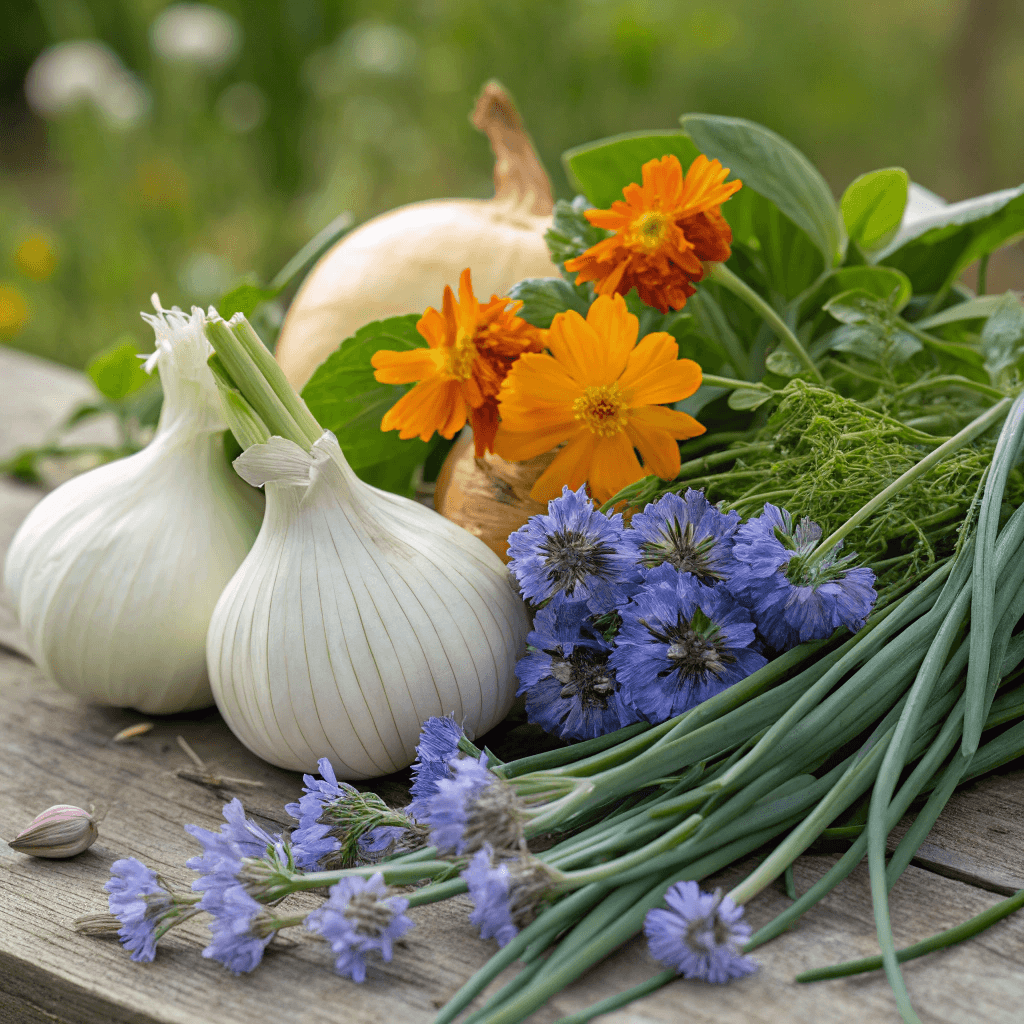
- Garlic and Onions
The intense aromas of these vegetables make it difficult for aphids, spider mites, and crawling slugs to detect strawberries. They will also repel specific fungi that may otherwise bother the plant. Positioning these plants around the border of the strawberry bed ensures your plants get total safeguarding from those pests.
In the fall, gently seed garlic cloves. For onions, opt for sets that can be laid out in the spring, about 4-6 inches apart between each.
- Marigolds
These flowers do much more than just add brightness. They discourage damaging nematodes (root-dwelling parasites), tiny aphids, and others. The secret is in its roots, which contain a component named “thiophene.” It’s especially toxic to those ground nematodes, and some say its smell confuses the insects!
For the best effect, position them generously across the garden and along its limits.
- Borage
Borage not only brings in important pollinators but wasps as well. These helpful bugs feed on aphids, doing all the work for you, but they also have another role; it’s thought that they prevent tomato hornworms, which are also, at times, attracted to strawberries.
Borage likes to “travel” around, so don’t allow it too much space. Be also careful because it has tiny strands that could be itchy.
- Chives
Part of the allium family, this little beauty will offer a good protection strategy. Chives give off a strong smell that confuses and forces out aphids and additional bugs, naturally.
Place them throughout the limits of your garden; they’ll return year after year as perennials, so they will be reliable helpers.
2. Helpful Bug Inviters

- Alyssum
With their tiny size, it may not be clear the impact this little flowering beauty has. They are ready and waiting to chow down on aphids as your defense system.
Opt for alyssum as a ground cover, and plant a lush carpet around the strawberries for additional visual appeal and protection.
- Yarrow
As if designed by nature herself, ladybugs and several other bugs find yarrow irresistible. With its bright blooms and natural way of supporting ladybugs and other bug families, the tiny pests never stand a chance. Its lovely groups of mini blooms are a welcoming haven.
Easy-growing yarrow is a simple-care plant. Find a location throughout your garden near your strawberries where these helpers can freely move.
- Lavender
The bees that help pollinate for more plentiful crops love it! It can also twist any pest attack plans with its natural smell, which can naturally keep a distance between them.
Have the lavender a little distance to prevent too much shade; keep your berry beauties fully in the sunlight!
3. Dirt Condition Improvers
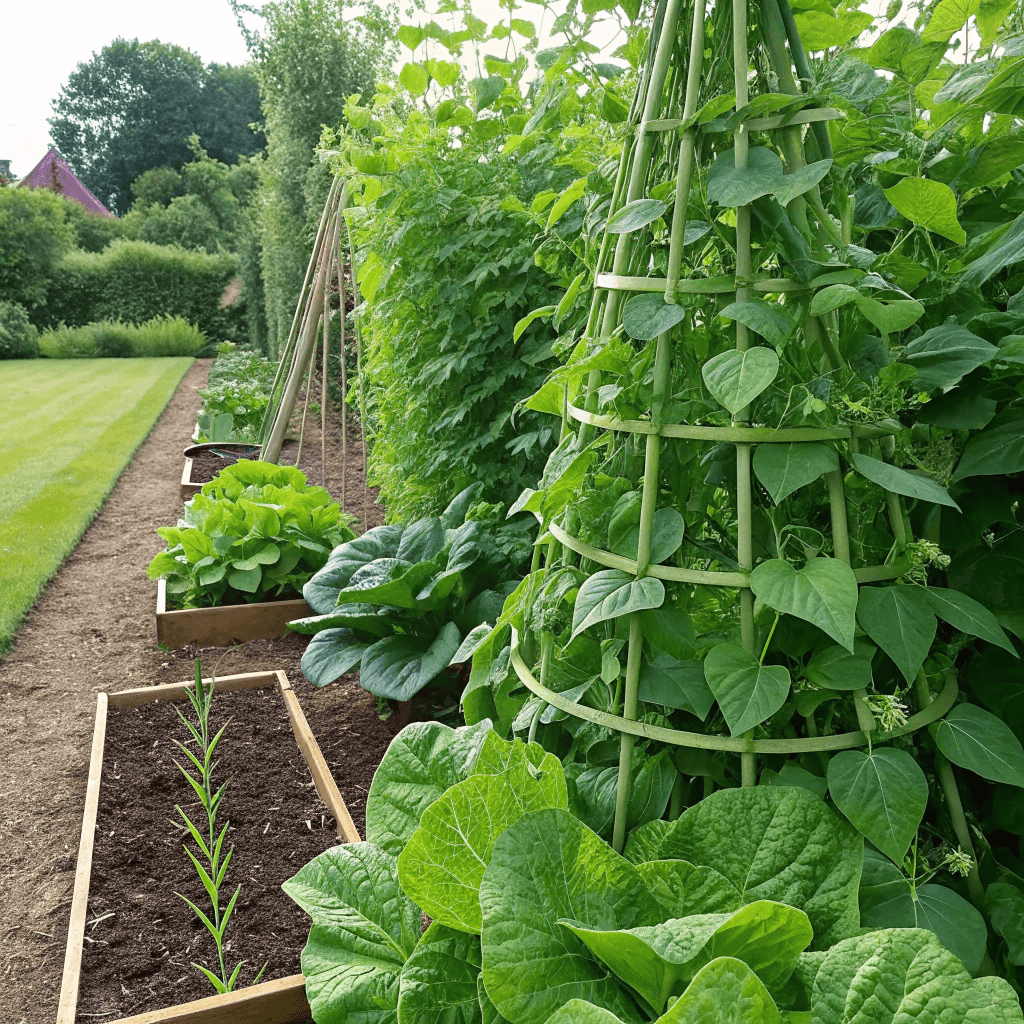
- Bush Beans
Unlike many, bush beans are incredible for adding nourishment, making nitrogen, and storing it within the soil, resulting in better and healthier strawberry growth. It’s like nature’s fertilizer!
Plant the beans amongst the berries, but ensure there’s no covering from light for best outcomes.
- Spinach and Lettuce
Together, they ensure humidity and a cooler temperature. Prevent the soil from drying out and unwanted weeds from growing by covering it with beautiful green foliage. These crops have shallow roots, preventing them from fighting over food and space.
Space them so there is enough room for all plants to flourish between your berries. Harvest regularly to use, eat, and clear space for others to grow.
- Comfrey
Comfrey’s roots dig deep to seek out needed resources and bring them to the surface, where, through the use of leaf mulch, potassium and other important minerals are more available for plants.
This can spread fast, so ensure you cut, trim, or dig up when needed so the leaves can improve everyone in that space.
4. Sun and Support Providers
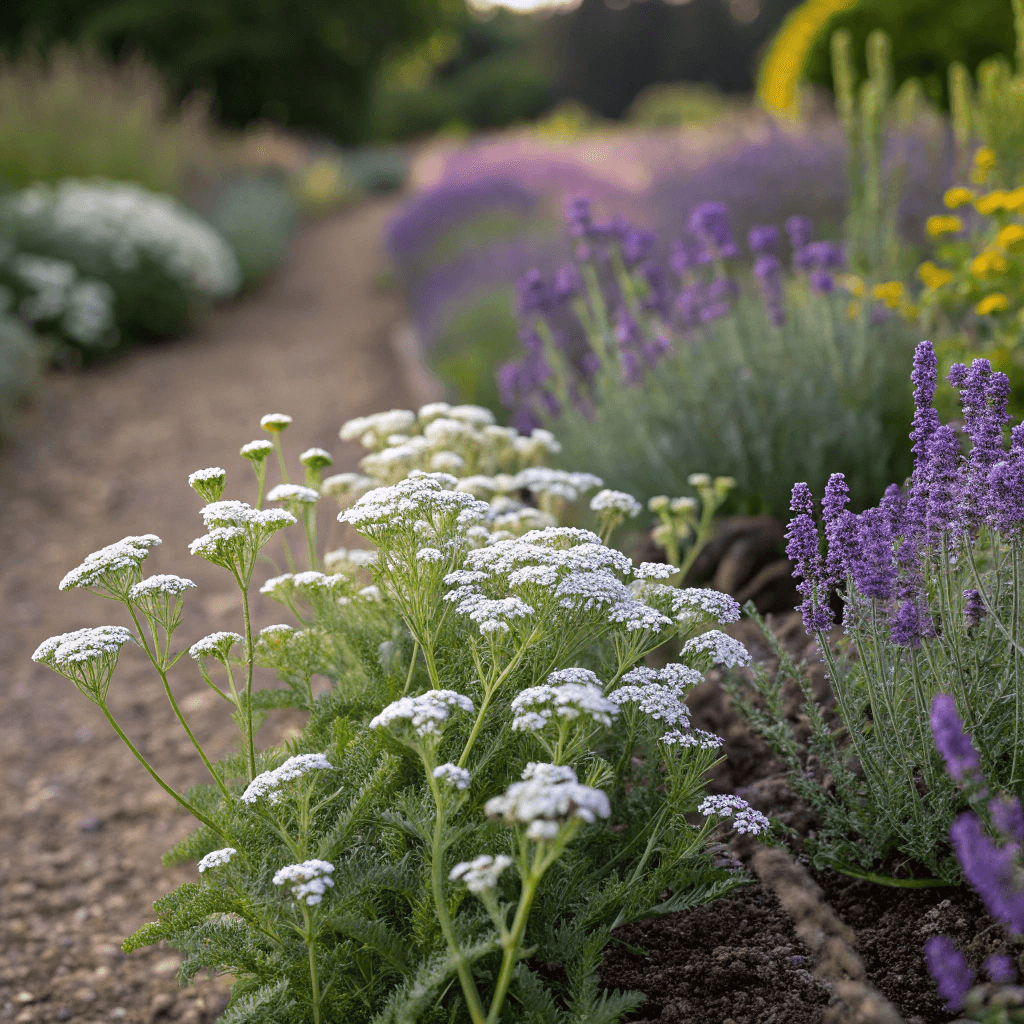
- Thyme
It covers the soil to give extra protection from weeds and is a very friendly barrier for various pests! It also has the extra power of controlling soil overheating.
Lay it as ground cover so your strawberry plant sits neatly with a natural bed of thyme around the edges.
- Spinach
The large leaves create shade and help to protect strawberries from extremely strong sunshine.
Plants to Avoid Planting with Strawberries
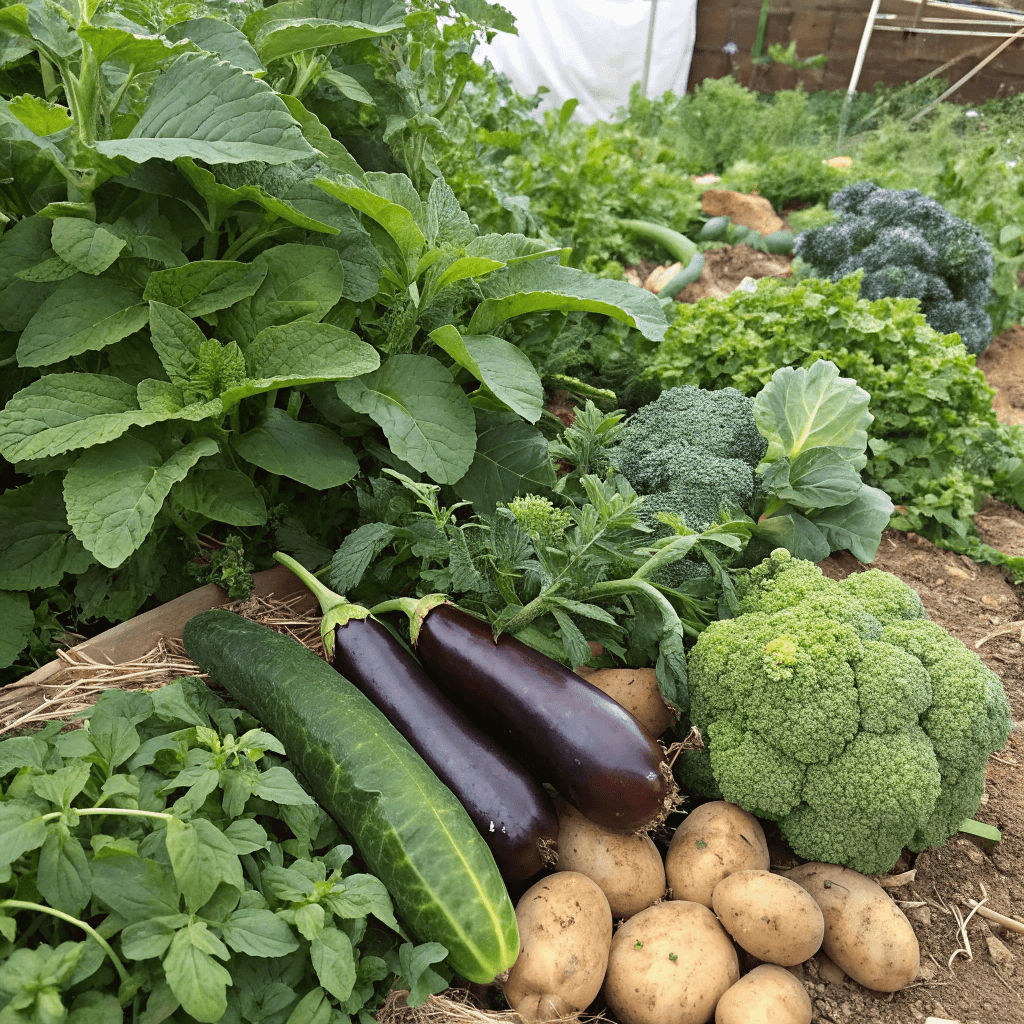
Sadly, not all species make friends easily, and the following are certainly not friendly options:
- Brassicas (Broccoli, Cabbage, Cauliflower)
Stealing nutrients and space while inviting destructive whiteflies.
- Tomatoes, Peppers, and Eggplants
It can play host to a large number of pests and transfer nasty ailments.
- Fennel
This one stops all other plants nearby from fully growing.
- Mint
With its speedy takeover methods, the mint will easily overwhelm; no one wants this as a neighbor.
- Potatoes
Potatoes share the same types of issues.
- Raspberries/Blackberries
They share illnesses with the strawberries, so they are not good companions.
Practical Tips for an Effective Garden Season
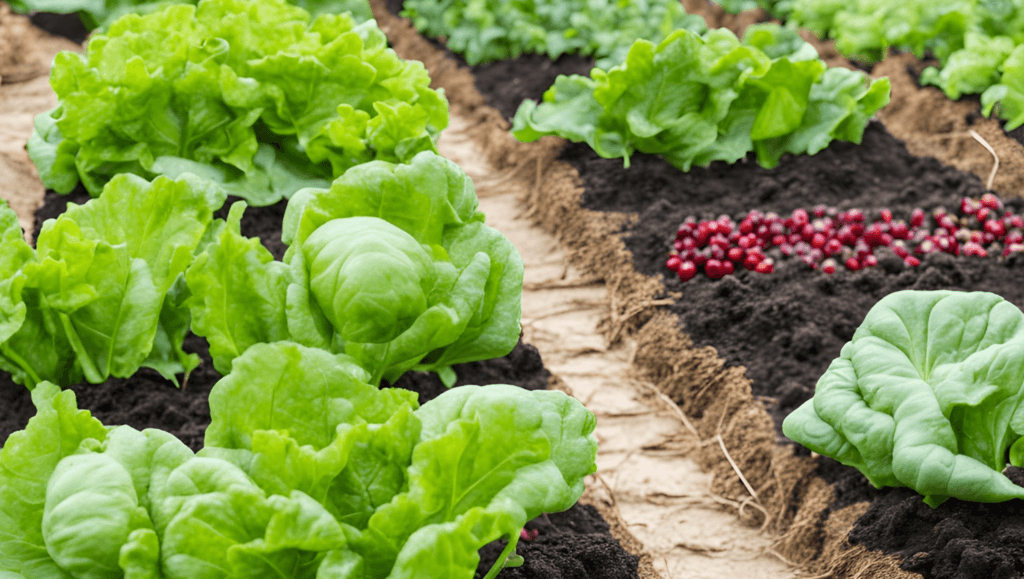
- Chart out your garden before laying it out. Imagine the final dimensions and give plants the needed space; in this way, you can keep an eye on everything.
- Don’t add all the plants at once. Select a few and try; that way, you can see the result and adapt.
- Never forget to regularly check for bug invasions and diseases so you can resolve any issue at an early stage
- Keep enough spacing so there is good circulation, preventing possible distress.
- Keep things right by moving your plants; this is known as crop rotation, and it promotes soil enrichment.
- Help by adding mulch; this is ideal for ensuring moisture is contained and reduces the need for extra water.
- Offer water, especially in hot weather periods; all plants enjoy the extra refreshment.
- You will find certain options may or may not be working; just adapt. The garden is a living organism; adjust it to suit your needs!
Bonus Tip: Did you know you can grow strawberries at home using vertical gardens? Check out my in-depth guide, “Top 9 Best Vertical Garden Hydroponic Systems for Smart Gardening” to find the perfect system for your home garden. Happy gardening!

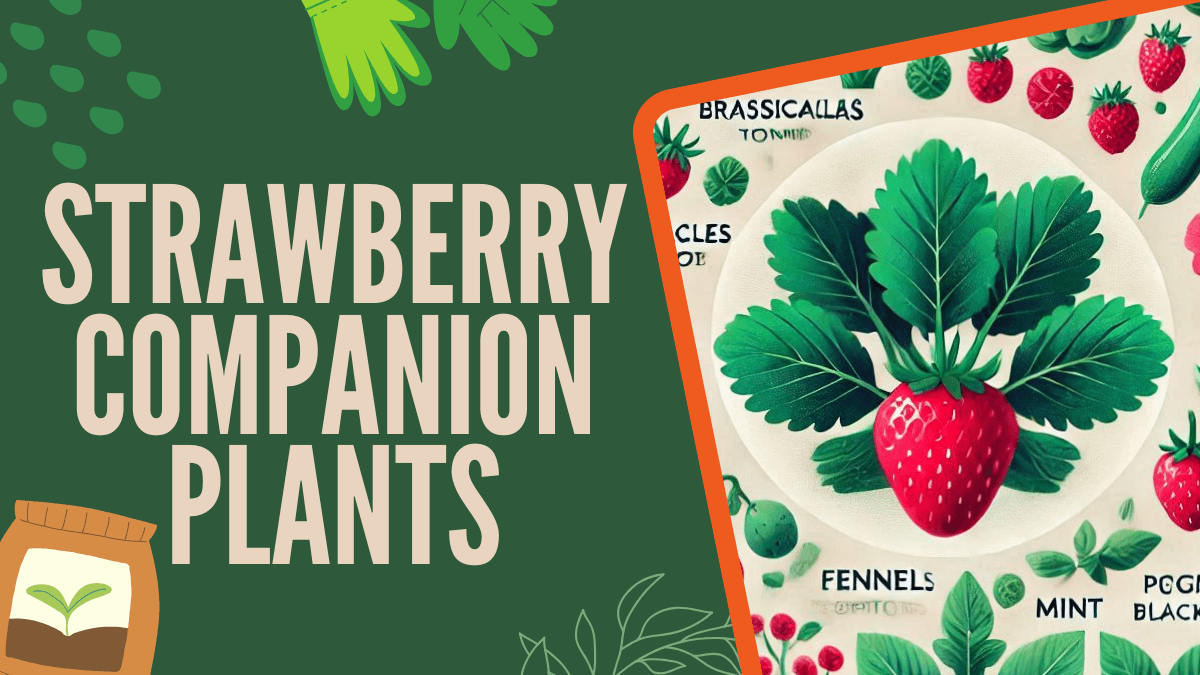
Leave a Reply